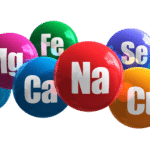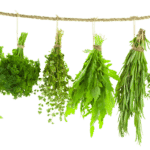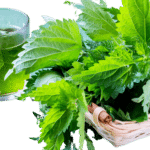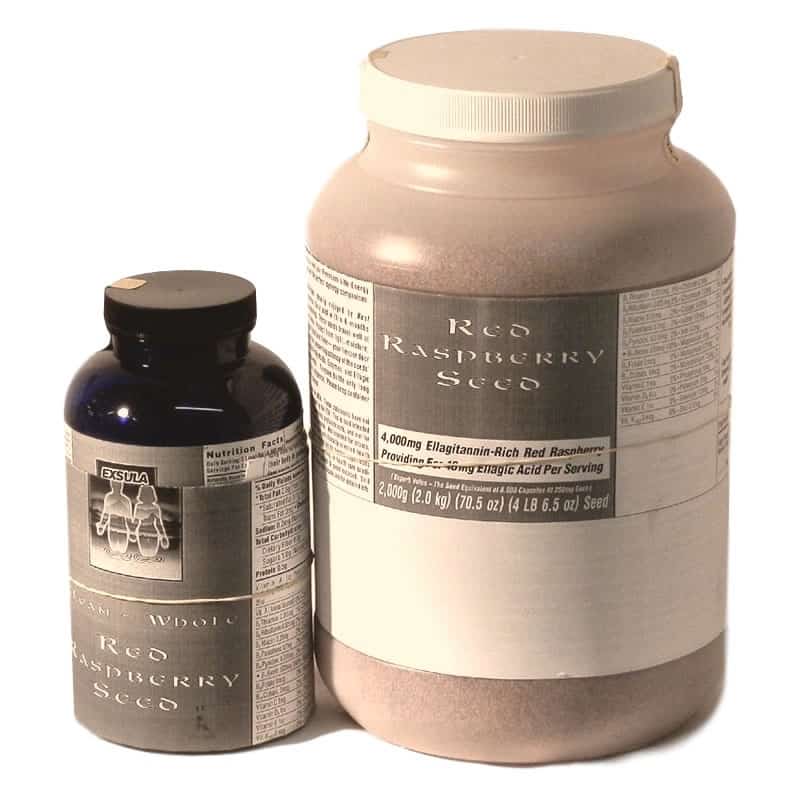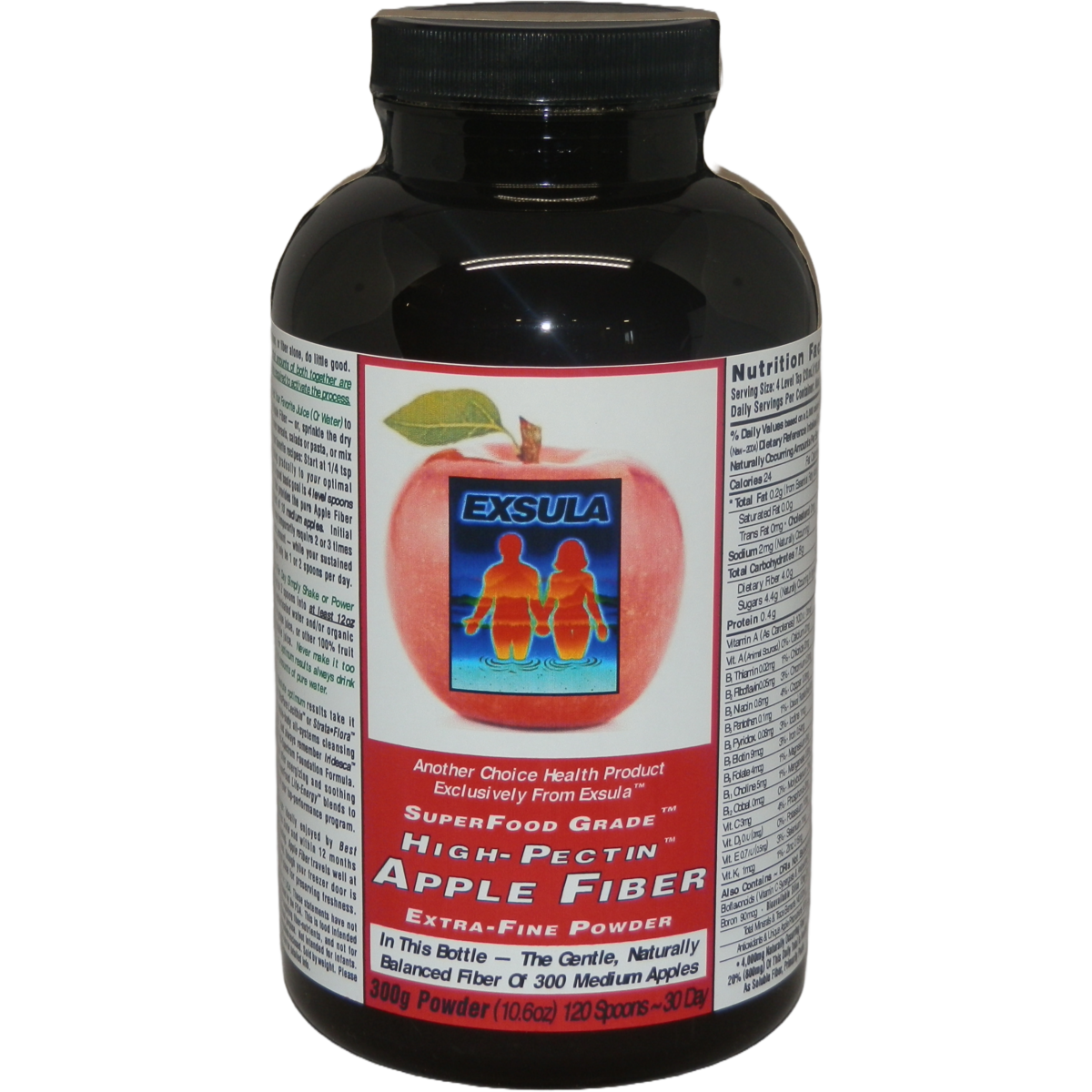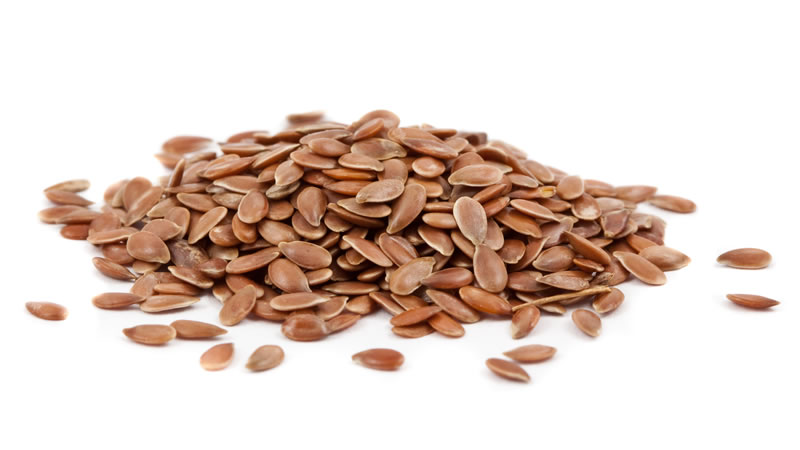No products in the cart.
Chia Seeds
Superior Source of Omega 3s, Antioxidants, Fiber And Much More
Chia seeds are a standardized, nutritionally consistent crop – very high in protein, fiber and omega-3 essential fatty acids.
The mild, pleasant taste makes it very appealing in food preparation and diversity in the kitchen. The whole seed of chia can be absorbed by your digestive system, and the entire seed can be safely used as a food ingredient.
Premium Quality Food…
- Improve Joint Function and Mobility
- Enhance Digestive Health, Bowel Function and Regularity
- Cardiovascular Health
- Fat Metabolism and Weight Loss Assistance
- Nourish Your Skin and Hair
It is Wednesday morning and I don’t feel like making eggs for breakfast today. I realized I still have two portions of homemade chia pudding in the fridge, so I am going to grab one now and tell you how I made it. But before that, let me tell you why I made it and why I think you should try it too. You probably have heard the word superfood a lot around certain foods, plants, herbs, or seeds, and we already have a post about what we can call the Original Superfoods, those that have been around for hundreds of years, used for their health benefits in ancient traditional cultures. For marketers it is a great way to sell more of their miracle products if they use some kind of magical wording to describe them, and the word superfood does sound very appealing. I am going to stay away from that term for now, because whether you think of chia seeds as one or not, their nutritional value is much more important than the superfood label they may or may not come with.
Chia seeds come from a plant called Salvia Hispanica, a member of the mint family, that mostly grows in Central America. The plant itself requires a constant temperature and light, so it is not very easy to grow it in more variable climates. Chia seeds are naturally gluten free and they have a lot of health benefits, but also some negatives that we should take into consideration. Ancient Aztecs, Mayans, and Incans probably had no idea about the micronutrient profile of these seeds, but they used them for the undeniable benefits they experienced during long distance runs and battles. Today, we are able to understand the nutritional breakdown of these seeds to figure out why ancient civilizations valued these tiny seeds so highly that they even used them as a tribute to their rulers.
Benefits and Uses of Chia Seeds
They look like nothing at first glance, but they are powerful little things! First, lets examine the macronutrients they bring to the table (literally). One ounce of chia seeds contains 5 grams of protein, 9 grams of fat, and 12 grams of carbohydrates. They contain all of the essential amino acids, which is rare in the plant world, making them a great protein source for Vegans and Vegetarians. Most of the chia seeds fat comes as polyunsaturated fatty acids (PUFA), most of which are Omega-3s, again making chia seeds stand out in the plant world. Even though most of these Omega-3s are ALA and not DHA (our bodies can turn ALA and EPA into DHA, but the ratio is very low; getting our dose of essential DHA from sources like fatty fish is so much easier and more convenient), the fat profile of chia seeds is still very good, also because of the good Omega-3 to Omega-6 ratio. (Why is this a good thing? Learn more here.) Eleven grams of the 12 mentioned above come from fiber and only 1 gram of sugar. The majority of the fiber is insoluble. This fiber is indigestible, doesn’t raise blood sugar, and helps to improve digestive function (making chia seeds you new best friend if you’re trying to stop using coffee for your morning constitutional). The soluble fiber in chia seeds helps to feed gut flora, promoting gut health by nourishing your microbiome.
As for micronutrients, chia seeds are very rich in calcium (18% of the recommended daily intake, which is more than a glass of milk!), phosphorus (27%), and manganese (30%) in one ounce. They have plenty of antioxidants, other trace minerals like iron (more than spinach), copper, zinc, and vitamins A, B, E and D. The soluble fiber in chia seeds is called mucilage (you can find the same compound in flax seeds or agar agar) and this fiber is able to absorb up to 10 times more liquid than it weights, creating a gel-like consistency (and here comes the chia pudding). Don’t confuse this with gelatin or collagen which form protein and animal based gels; this gel is carbohydrate based (fiber), doesn’t require cooking (simply soak whole or ground seeds in water or coconut milk and wait 10-15 minutes for the mixture to thicken), making it perfect substitute for commercially sold (and chemically laden) energy gels runners and other endurance athletes like to use. Mix a few tablespoons with coconut water to make your own, super healthy energy gel without chemical additives and colorings. Its a perfect option for runners, hikers, or active kids! You can also purchase reusable food pouches like these or these to pour your gel into for easy grab-and-go snack. They are freezer safe, BPA, and phthalate free and the second option is guaranteed to last for a whole year!
And here comes my favorite part The Pudding! I don’t like mine too sweet, so I only mix coconut milk with a few tablespoons of chia seeds (adding some cinnamon, cardamom, cacao powder, or vanilla extract is optional, but highly recommended; of course feel free to add a bit of honey or maple syrup if you like your dessert/breakfast pudding a little sweeter), blend for a few seconds (you can use a blender, but just shaking the jar does the trick), pour into small mason jars and let set overnight (it will thicken in less than 30 minutes, you don’t need to wait until the next day) in the fridge, so then I have a tasty and healthy, sugar and dairy free breakfast (or snack) option ready every time I don’t feel like making scrambled eggs (like this morning). You can of course add some fresh berries or banana slices at the bottom of the jar for more flavor, but just this plain recipe makes an excellent low-carb option that is packed with nutrients, and without the insulin spike you would get from breakfast cereals. The texture is interesting and fun, a little bit like more crunchy oatmeal, and kids usually love it too!
Chia seeds are very versatile in cooking, especially because they are neutral in flavor so they will not affect the taste at all. You can either use them whole, or grind them up to make a flour. Chia flour mixed with water (1tbsp of chia flour + 3tbsp of water) makes a great egg substitute for baking (particularly for Vegan recipes). Just mix the two together, allow it to sit for a little while to let the substance gel, and use instead of an egg in pancakes, baking, or even meatloaf. Ground chia seeds are also a good soup or sauce thickener. Experiment with them in your kitchen, try using them as a breading for fish or chicken to get a crunchy crust without gluten (like from regular bread crumbs) or too much Omega-6 (as you might get from nut flours).
The Dark Side of Chia Seeds
We all know by now that nothing is just rainbows and unicorns, right? When a little bit of something is good, it doesn’t necessarily mean that more is better. Too much of basically anything can have a negative impact on your body, and chia seeds are no exception. They are not magical, they need to be consumed with adequate knowledge, care, and personal experience. Knowing your own fiber tolerance is key, especially if you consume chia seeds on a daily basis. Eleven grams of fiber is a lot, so if you already experience some digestive issues or constipation, be careful that you don’t over-do it with too many chia crackers or too much chia pudding for breakfast. If you are actually trying to increase your fiber intake, consider getting it from vegetables first, don’t make chia your primary fiber source (or your main protein source either). To get the ideal amount of protein from chia seeds, you would have to consume somewhere between five to six ounces, that is a huge amount, most people would probably never eat that much in one sitting. Considering how too much fiber can affect digestion, with six ounces of chia seeds, the amount of insoluble fiber would be too much to handle. Use chia seeds in moderation as part of a well balanced diet. They’re great, just not wise to binge on.
Another potential downside of chia seeds is phytic acid, present in most seeds and grains. Soaking usually helps to reduce the amount of this antinutrient, we soak nuts for the same reason. The amount of chia seeds one usually consumes is pretty low, so we generally don’t have to worry too much about this compound. It is relatively easy to overeat nuts, but chia seeds are so dense and filling (thanks to mucilage and its ability to absorb so much liquid and expand in volume) it probably doesn’t need to be a concern. If you experience some kind of digestive distress though and you realize chia seeds are to blame, I would recommend staying away from them and focusing on your gut health first. They can be too much to handle for someone who is still healing leaky gut, or dealing with conditions like Crohn’s or Ulcerative Colitis, or any condition where there are nooks and crannies in the gut for them to get caught up and cause irritation as in the case of Diverticulitis. Even though they are a good source of many important nutrients, they do not have anything special in them you wouldn’t be able to find somewhere else, so mix up your sources.
Chia Seeds – Yay or Nay?
Like I just said chia seeds are great and a fun option, but there is no particular magic to them. They have a number of benefits and are very convenient, affordable, and easy to use. They make perfect egg substitute for those who are sensitive to eggs but still want to bake a banana bread from time to time, they make a fun energy gel option, and an easy fake oatmeal for breakfast. There is nothing super unique about them and you do have to be careful to not eat too many chia seeds, mostly because its just too much for most digestive systems to handle. I don’t use them regularly and I don’t always have a pack in my pantry, but from time to time I like to switch it up a bit and have fun with my breakfast. It is nice to have options, especially when you know you are not sacrificing your health. Overall you don’t need to fall for chia seeds. Use them if you like the texture and taste, but don’t think you are missing out on something magical if you don’t add chia seeds to your diet. They’re marvelous, nutrient dense little seeds, but that doesn’t mean they’re the best choice for every person. Listen to your body and eat accordingly.
More Nutrition than Conventional Sources
| 8X MORE Omega 3s than Salmon |
Chia Seeds offers superior Omega 3 benefits over fish oils and salmon without the strong taste. Omega-3 fatty acids play a crucial role in brain function, growth and development. Chia Seeds are the richest vegetarian source of EFAs in nature. | |
| 4X MORE Dietary Fiber than Flax Seed |
Rich fiber content is one of the main reasons Chia Seeds are considered nature’s perfect whole food. Dietary fiber has been proven to lower high blood levels of cholesterol. Because of Chia Seed’s ability to absorb several times its weight in water, it may also help to curb hunger. | |
| 3X MORE Antioxidants than Blueberries |
Laboratory and research has shown antioxidants help prevent the free radical damage that is associated with cancer. | |
| 15X MORE Magnesium than Broccoli |
Magnesium helps with formation of bone and teeth, and assists the absorption of calcium and potassium. Where calcium stimulates the muscles, magnesium is used to relax the muscles. |
|
| 7X MORE Vitamin C than one Orange |
Vitamin C promotes a healthy immune system, helps wounds heal, maintains connective tissue and aids in the absorption of iron. | |
| 6X MORE Calcium than Whole Milk |
Calcium is the chief supportive element in bones and teeth. Calcium salts make up about 70 percent of bone by weight, and give your bones strength and rigidity. | |
| 3X MORE Iron than Spinach |
The main function of iron is to help carry oxygen from your lungs to muscles and other organs. When iron is low, this oxygen consumption slows down. | |
| 1.1X MORE Fiber than All Bran Cereal |
Dietary fiber has been proven to lower high blood levels of cholesterol. | |
| 50% MORE Folate than Asparagus |
Folate is needed to make DNA and RNA, which is critical during periods of rapid cell division and growth, such as infancy and pregnancy. Folate also helps to prevent changes to DNA that may lead to cancer. |
Salba Seed vs. Flax
- Chia contains more Omega-3 fatty acids than flax.
- Chia is used for many purposes, while flax is mainly used for enhanced amounts of Omega-3s.
- Chia has a mild, pleasant taste, while flax has a strong, dominant flavor.
- Chia has received critical acclaim for its diversity in the kitchen, while flax is limited in recipe development.
- Chia whole seed can be absorbed by your digestive system. Flax must be ground for use.
- Chia absorbs 8 to 12 times its weight in water, while flax absorbs roughly 6 times.
- Chia is 100% nontoxic, while flax contains Linamarin – a cyanogenic glycoside.
- 100% of Chia seed can be safely used as a food ingredient. Only 12% of flax can be used.
Chia Seeds: Superior Source of Omega-3s
Chia Seeds and EFAs. It’s All About the RatioOmega-3s are essential fatty acids that the human body needs to function properly. As the world has become more globalized, the Western diet has drastically changed. According to Mary Clarke, PhD, of the Department of Nutrition Education at Kansas State University, the ratio between Omega-6 and Omega-3 was about 1 to 1, a half century ago. Today, it is an alarming 25 to 1, and even worse in the breast milk of many pregnant women: 45 to 1. The main reason for this as, Dr. William Aronson of the School of Medicine at UCLA, says is, “Corn oil (containing an incredibly high amount of Omega-6 fatty acids) is the backbone of the American diet.”
The basic differences between Omega-3s and -6s:Omega-3 fatty acids reduce inflammation, Omega-6 fatty acids increase inflammation.Omega-3 fatty acids are antithrombotic, Omega-6 fatty acids increase blood clotting.Omega-3 fatty acids are non-immunoreactive, Omega-6 fatty acids are immunoreactive.
Benefits of Omega 3 Essential Fatty Acid Supplementation. Because imbalanced ratios are relatively new, there are many research projects underway surrounding the benefits of Omega 3s. Some of the preliminary results support the hypothesis that Omega-3s benefit:
- Depression
- Breast, Colon, and Prostate Cancer
- Weight Management/Obesity
- Coronary Heart Disease
- Diabetes Management
- Cardiovascular Heart Disease
More energy - Clearer skin
- Healthier hair
- Improved bone and joint health
- Improved allergic response
The Origin of Chia Seeds
Chia Seeds are the result of years of traditional (non-GMO) plant breeding of Salvia Hispanica L. A long process of plant research was carried out by sorting the few white grains produced by the mostly black grain producing Chia plant, and replanting them. Researchers were able to produce a primarily white grain that has an enhanced overall nutrient density to Chia grain. This superior new grain was named Salba Seed. The word “Salba” is a combination of Chia’s botanical name “Salvia Hispanica L” and the Latin name for white, “Alba”.
By 1994 Salba Seed was introduced in Columbia, and in 1997 further experimental crops were started in Bolivia and Peru. Because of the subtropical climate needed to grow the Salba Seed crops, they are now primarily cultivated under controlled conditions in the Amazon Basin located in Peru: one of the last bastions of unspoiled places in the world.
Chia Seed is grown using common agricultural techniques used for grain crops. It is sown mechanically and it is not treated chemically in any way prior to sowing. There are NO pesticides applied before or after harvest. Chia Seed is allowed to ripen naturally and then the grain is mechanically harvested using a modified grain combine harvester. It is put through a strainer to eliminate any debris such as soil or stones.
Chia was the cornerstone in the diet of the Aztec empire. It was used by the Aztecs as a staple that sustained them on expeditions and in battle. Runners who carried messages throughout the immense Aztec kingdom relied on Chia for their nourishment. Chia played an important part in ceremonial pageants and rituals symbolizing enhanced vigor and longevity.
Chia Seed has been extensively researched by Dr. Vladimir Vuksan Associate Director of the Clinical Nutrition and Risk Factor and Modification Center at St. Michael’s Hospital, University of Toronto, Canada, and Professor at the University of Toronto, Faculty of Nutritional Sciences, and Faculty of Medicine, Toronto. In randomized acute and long-term studies, the clinical results clearly document the great health potential of Salba Seed as a functional food, that can be used as a novel agent in the prevention and treatment of cardiovascular disease.
Salba Seed is the only food that holds a medical patent (60-274.256). The patent pertains to Salba Seed’s ability to manage the effects of diabetes and the dietary approaches to such management. It is focused on methods of improving associated metabolic abnormalities, specifically with Salba Seed, and methods of use in these seeds in lowering blood pressure, blood glucose and post-prandial glycemia. Also it is associated with helping risk factors such as inflammatory factors (hi-C reactive protein), coagulation (fibrinogen, factor VIII, Von Willebrant and fibronolytic factors such as t-PA, iron status and endothelial function.
Chia is a commercially grown seed that is very rich in omega-3 essential fatty acids, more than any other vegetable (specifically alpha linolenic acid or ALA). It also supplies antioxidants, vitamins, minerals and fiber. Increase your intake of vegetable proteins and help improve your natural defenses against degenerative disease.
- Improve Joint Function and Mobility
- Enhance Digestive Health, Bowel Function and Regularity
- Cardiovascular Health
- Fat Metabolism and Weight Loss Assistance
- Nourish Your Skin and Hair
The mild, pleasant taste makes it very appealing in food preparation and diversity in the kitchen. Convenient and ideal for mixing into virtually any food. The whole chia seed can be absorbed by your digestive system, and the entire seed can be safely used as a food ingredient. All natural, no transfats, very few carbohydrates, certified Non-GMO, Vegan, Kosher, and gluten-free for those with celiac disease. Sprinkle Chia Seeds on cereals, mix with yogurt, smoothies or salads. Include Chia Seeds in baking and cooking: breads, cookies, muffins, burgers, soups, casseroles, pastas or anything else you can think of.
Superior Protein:
Compared to other grains, even soy. One 12g (2 tablespoons) serving of Chia Seed offers as much vegetable protein as 1 cups of Kidney beans.
More Fiber:
Than any other natural source. Every serving of Chia Seed provides more than 5,000 mg of dietary fiber… as much as in 1 cups of All-Bran cereal!
Chia Seed vs. Flax
- Chia Seed contains more Omega-3 fatty acids than flax.
- Chia Seed is used for many purposes, while flax is mainly used for enhanced amounts of Omega-3s.
- Chia Seed has a mild, pleasant taste, while flax has a strong, dominant flavor.
- Chia Seed has received critical acclaim for its diversity in the kitchen, while flax is limited in recipe development.
- Chia Seed whole seed can be absorbed by your digestive system. Flax must be ground for use.
- Chia Seed absorbs 8 to 12 times its weight in water, while flax absorbs roughly 6 times.
- Chia Seed is 100% nontoxic, while flax contains Linamarin – a cyanogenic glycoside.
- 100% of Chia Seed seed can be safely used as a food ingredient. Only 12% of flax can be used.
Nutritional Value Details of Chia Seeds
Chia seeds are typically small ovals with a diameter of about one millimeter. They are mottle-colored with brown, gray, black and white.
1 tablespoon (tbsp) = 10 gram
| Nutrition details | per 100 gm of Chia Chia Seed |
per 1 oz of Chia Chia Seed |
| Calories | 524 kcal (2194 KJ) | 105 kcal (439 kJ) |
| Total Fat content | 31.4 gm | 6 gm |
| Saturated fatty acids | 3.1 gm | 0.5 gm |
| Trans fatty acids | 0 gm | 0 gm |
| Omega-6 Fatty acids | 5.9 gm | 1.0 gm |
| Omega-3 Fatty acids | 20.36 gm | 4.0 gm |
| Single unsaturated fatty acids | 2.1 gm | 0.4 gm |
| Cholesterol | 0 gm | 0 gm |
| Carbohydrates | 37.5 gm | 7.5 gm |
| Dietary fiber, total | 33.7 gm | 7.0 gm |
| Soluble dietary fiber | 4.0 gm | 0.8 gm |
| Insoluble dietary fiber | 29.7 gm | 6.0 gm |
| Protein | 21.2 gm | 4.0 gm |
| Vitamins | per 100 g/mg | Reference level (mg*) | 1 oz cover (%)** |
| Vitamin A | 10 IU | *** | *** |
| Vitamin B1 | 0.89 | 1.00 | 18.00 |
| Vitamin B2, Riboflavin | 0.20 | 1.20 | 3.00 |
| Vitamin B3, Niacin | 11.20 | 13.00 | 17.00 |
| Vitamin B6 | 0.10 | 1.20 | 2.00 |
| Vitamin B8, Biotin | 12500 | 30000 | 8 |
| Vitamin E | 29.10 | 12.00 | 50.00 |
| Minerals | per 100 g/mg | Reference level (mg*) | 2 TB cover (%)** |
| Boron | 0.03 | *** | *** |
| Calcium | 500 | 1000 | 10 |
| Iron | 6.5 | 15.0 | 10.0 |
| Potassium | 600 | 2000 | 6 |
| Copper | 1.5 | 1.5 | 20.0 |
| Magnesium | 290 | 300 | 20 |
| Sodium | < 0.3 | 550 | < 0.01 |
| Phosphorus | 535 | 700 | 16 |
| Selenium | < 0,2 | *** | *** |
| Zinc | 5 | 7 | 14 |
| *
** |
Based on the reference level of the D-A-C-H, daily recommended for women, healthy not pregnant, aged between 25 and 51 years Percent per daily value no Reference level ( D-A-C-H = Coalition of German DEG, Austria GE, Swiss SVE and SGE ) |
Omega-3 and -6 fatty acids
The two essential fatty acids are the source of nutrients that control processes like blood pressure, coagulation of blood and the level of the blood fat. A balance of the fatty acids is very important, so that the fatty acids can work correctly. Chia Chia products contain this optimal balance of the fatty acids better than other oily seeds.
Vitamin B1
Vitamin B1 plays an essential role in the metabolism of carbohydrates and amino acids. Used by athletes Vitamin B1 helps improve performance through better conversion of carbohydrates and amino acids. Chia helps with this metabolism. B1 is involved in the cleavage of cells and in the formation of amino acids, fatty acids and carbohydrates.
Vitamin E
Vitamin E is very important for the metabolism of fats as it protects the polyunsaturated fatty acids from destruction by oxidation. Vitamin E inhibits cardiac infarction, cancer, Alzheimer and it can protect against sediments in the blood vessels.
Calcium
Calcium plays an essential role in the growth and maintenance of bones and teeth as well as in the signal processing in the nervous system. Calcium is needed for muscle contraction and it is also involved in blood coagulation. Calcium is an extremely important nutrient.
Magnesium
Magnesium is among other things necessary for normal muscle function, the relaxation. With low Magnesium athletes end up tearing their muscles, a common injury. Magnesium is involved in the extraction of sugar, in the cleavage of cells and in the metabolism of Calcium.
Phosphorus
Phosphorus is involved together with Calcium in the formation of bones and teeth. It help maintain the pH level in the body.
Zinc
Zinc is an activator of numerous enzymes and hormones, especially for healing from injuries.
Iron
Iron plays an important role in the red blood pigments. Iron is also responsible for the formation of the blood and the transport of oxygen. Especially for women, iron is an important nutritional component. A deficiency of iron results in weakness and anemia.
Copper
This mineral is a part of enzymes involved on the iron metabolism. Copper and Zinc are important in modulating many metabolic reactions.
Biotin B8
The Vitamin B8 is involved in the metabolism of carbohydrates, amino- and fatty acids. A deficiency can result in sickness and depression.
Potassium
Potassium plays together with sodium a role in the regulation of the water balance.
Chia Seeds Typically Contain:
- 20% protein
- 34% oil
- 25% dietary fiber (mostly soluble)
- significant levels of antioxidants
- no gluten and trace levels of sodium
- no known toxic components of Chia
- approximately 64% of the fats are omega-3 essential fatty acids
Many Ways to Eat Chia Seeds
- Chia Seed may be eaten raw as a dietary supplement for essential fatty acids and fiber.
- Drink Chia Seeds by soaking them in water, fruit or vegetable juice. In Mexico this is known as Chia fresca.
- The Seeds can also be ground to produce a meal (called pinole) which can be made into porridge or baked into breads, cakes and biscuits.
- When soaked in water, Chia Seeds are gelatinous in texture and are then used in gruels, porridges and puddings.
- Chia sprouts may be eaten similar to alfalfa sprouts in salads, sandwiches and other dishes.
- Most of us have heard of Chia sprouts grown on porous clay figurines – the popular Chia Pet.
User Reports
Indigestion Gone
“For months I was having stomach difficulties. Anytime I would lie down, I would suffer from severe indigestion and was unable to keep down any food. Needless to say, I slept sitting up all the time. I was prescribed several different types of medication and nothing worked… after taking the product (chia) for only 1 day I was sleeping in my bed. After two weeks of taking the chia I decided to take a break from it to find out if it was truly the chia that was making me feel better. The next day I was back sleeping in my chair again. In addition to sleep, I have lost inches and regained energy. Thanks chia”
M. Lou, Woodstock, Ontario
Helps Control Hunger
“I have found that chia, when eaten with breakfast, stops the huge rise in blood sugar one hour after breakfast. This post-breakfast rise is followed half an hour later by a huge drop that takes blood sugar down into what we call the “hunger zone.” Chia also stops that blood sugar drop, keeping you out of the hunger zone. Chia at breakfast smoothes out the sugar peaks and valleys that make us uncontrollably hungry. I have found that 2 tablespoons of chia at breakfast is effective at controlling hunger all day on a 1500 calorie a day diet.”
Dr. Jack Bukowski M.D., Ph.D.
Assistant Professor of Medicine, Harvard Medical School
Associate Rheumatologist Brigham and Women’s Hospital
Increased Energy, Glowing Skin
“As a nutritional biochemist, I am always looking for new whole foods that my clients can incorporate into their diet. (With Chia) Many people found they received increased energy, less blood sugar swings, and better moods. There was even a marked glow to the women’s skin – wrinkles were also less visible as (chia’s) EFA’s plumped up their skin! I heartily recommend it to all my clients now. It seems to help with low level depression (especially the Seasonal Affective Disorder so many Northerners get this time of year), food cravings and increase sports stamina.”
M. Keener
Wellness Through Balance
Better Shape Than 15-20 Years Ago
“Today, my family started our annual pre-spring cleaning of our back yard… to my surprise I found myself to be physically in better shape now than perhaps 15-20 years ago and perform the heavy labor to prepare the grounds as required. It’s amazing that when you are in the regime of taking Chia you don’t feel super power wellness until you put your body to task. After having taken medication for nearly 20 years, with which I never reached my current plateau readings of 123/72 with a pulse rate of 65, I’m happy to inform you that I have reached my personal goal that I have longed to reach.”
M. Guerrero, Dallas, TX
The History of Chia
Chia (Salvia hispanica) is a plant of the genus Salvia in the Mint family, originating in Mexico. It was largely cultivated as one of the five most important food plants by the Aztecs in pre-Columbian times. Tribute and taxes to the Aztec priesthood and nobility were often paid in Chia seed. After the arrival of the Spaniards, the plant became almost extinct because of cultural and religious reasons. Chia Seed is traditionally consumed in Mexico, the southwestern United States, and South America, but is not widely known in Europe. The United States Food and Drug Administration regards Chia as a food with an established history of safe consumption. Today, Chia is grown commercially in its native Mexico, and in Bolivia, Argentina, Ecuador, and Guatemala. A similar species, golden Chia, is used in the same way but not widely grown commercially. Chia (Salvia Alba), also known as Chia, is grown in Peru.
The Origin of Salba Seed
Please Note:
Salba Seeds are simply patented, Chia seed.
Salba Seed is the result of over 10 years of traditional (non-GMO) plant breeding of Salvia Hispanica L. The first experimental plots for Salba Seed were started in 1991 in Argentina. A long process of careful plant research was carried out by painstakingly sorting the few white grains produced by the mostly black grain producing Salba plant, and replanting them. Researchers were able to produce a primarily white grain that has an enhanced overall nutrient density to chia grain. This superior new grain was named Salba Seed. The word “Salba” is a combination of Chia’s botanical name “Salvia Hispanica L” and the Latin name for white, “Alba”.
By 1994 Salba Seed was introduced in Columbia, and in 1997 further experimental crops were started in Bolivia and Peru. Because of the subtropical climate needed to grow the Salba Seed crops, they are now primarily cultivated under controlled conditions in the Amazon Basin located in Peru: one of the last bastions of unspoiled places in the world. Salba Seed is grown using common agricultural techniques used for grain crops. It is sown mechanically and it is not treated chemically in any way prior to sowing. There are NO pesticides applied before or after harvest. Salba Seed is allowed to ripen naturally and then the grain is mechanically harvested using a modified grain combine harvester. Salba Seed is put through a strainer to eliminate any debris such as soil or stones.
Chia was the cornerstone in the diet of the Aztec empire. It was used by the Aztecs as a staple that sustained them on expeditions and in battle. Runners who carried messages throughout the immense Aztec kingdom relied on Salba for their nourishment. Chia played an important part in ceremonial pageants and rituals symbolizing enhanced vigor and longevity.
Salba Seed has been extensively researched by Dr. Vladimir Vuksan Associate Director of the Clinical Nutrition and Risk Factor and Modification Center at St. Michael’s Hospital, University of Toronto, Canada, and Professor at the University of Toronto, Faculty of Nutritional Sciences, and Faculty of Medicine, Toronto. In randomized acute and long-term studies, the clinical results clearly document the great health potential of Salba Seed as a functional food, that can be used as a novel agent in the prevention and treatment of cardiovascular disease.
Salba Seed is the only food that holds a medical patent (60-274.256). The patent pertains to Salba Seed’s ability to manage the effects of diabetes and the dietary approaches to such management. It is focused on methods of improving associated metabolic abnormalities, specifically with Salba Seed, and methods of use in these seeds in lowering blood pressure, blood glucose and post-prandial glycemia. Also it is associated with helping risk factors such as inflammatory factors (hi-C reactive protein), coagulation (fibrinogen, factor VIII, Von Willebrant and fibronolytic factors such as t-PA, iron status and endothelial function.
One Serving of Salba Seed = 12 g and Contains:
| Calories | 46 | Dietary fibers | 04.20 g |
| Calories from fat | 37 | Soluble fiber | 00.42 g |
| Total fat | 04.14 g | Insoluble fiber | 03.70 g |
| Trans fat | 0.00 g | Protein | 02.60 g |
| Saturated fat | 0.41 g | Vitamin A | 01.60 IU |
| Polyunsaturated | 3.50 g | Calcium | 92.00 mg |
| Monounsaturated | 0.23 g | Magnesium | 46.00 mg |
| Total Carbohydrates | 4.50 g | Iron | 00.95 mg |
| Sugars | 0.00 g | Thiamin | 00.09 mg |
| Folate (Folic Acid) | 10.00 mcg | Riboflavin | 00.02 mg |
| Selenium | <00.01 mg | Copper | 00.20 mg |
| Niacin | 0.86 mg | Omega-3 Fatty Acid | 02.50 g |
| Omega-6 Fatty Acid | 0.76 g | Omega-9 Fatty Acid | 00.25 g |
| Antioxidants Orac Value | 840 | – | – |

